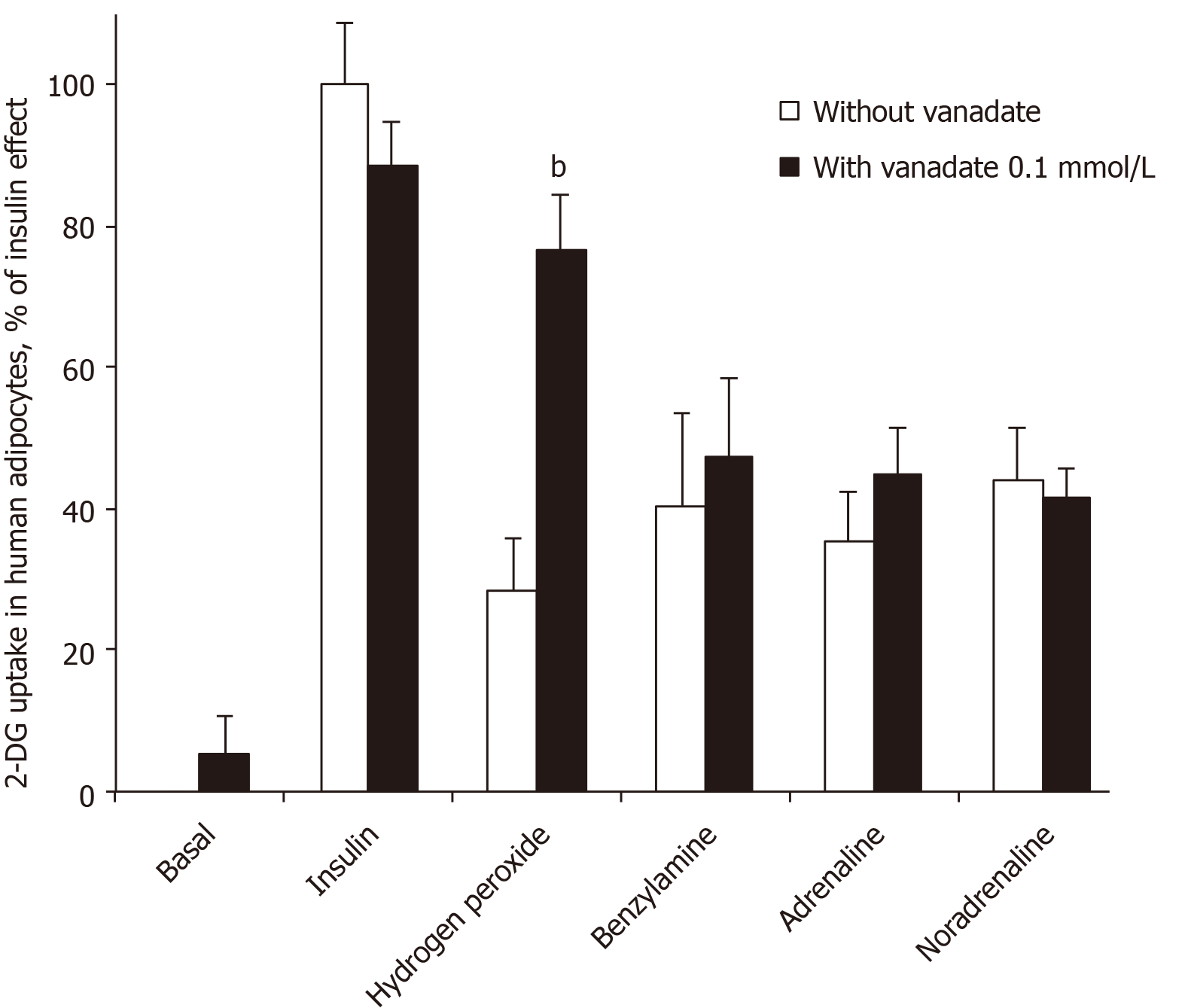Copyright
©The Author(s) 2022.
World J Diabetes. Jan 15, 2022; 13(1): 37-53
Published online Jan 15, 2022. doi: 10.4239/wjd.v13.i1.37
Published online Jan 15, 2022. doi: 10.4239/wjd.v13.i1.37
Figure 1 Influence of vanadate on glucose transport in human adipocytes in response to insulin, hydrogen peroxide and naturally occurring amines.
Suspensions of human fat cells were preincubated without (white columns) or with 100 µmol/L sodium orthovanadate (dark columns) for 45 min in the presence of the indicated amines at 100 µmol/L or with 100 nmol/L insulin and hydrogen peroxide at 1 mmol/L. [3H]-2-deoxyglucose uptake assay was then immediately performed for 10 min and expressed as the percentage of maximal stimulation by insulin (set at 100%), with baseline set at 0% (the respective levels of which were: 1.29 ± 0.12 and 0.45 ± 0.04 transported nmol 2-deoxyglucose/100 mg cell lipids/10 min). Each column is the mean ± standard error of the mean from 7 to 10 determinations. In all conditions tested, 2-deoxyglucose uptake was significantly different from basal. A significant influence of vanadium when compared to respective control without vanadate was observed at: bP < 0.01. 2-DG: 2-Deoxyglucose.
- Citation: Carpéné C, Boulet N, Grolleau JL, Morin N. High doses of catecholamines activate glucose transport in human adipocytes independently from adrenoceptor stimulation or vanadium addition. World J Diabetes 2022; 13(1): 37-53
- URL: https://www.wjgnet.com/1948-9358/full/v13/i1/37.htm
- DOI: https://dx.doi.org/10.4239/wjd.v13.i1.37









